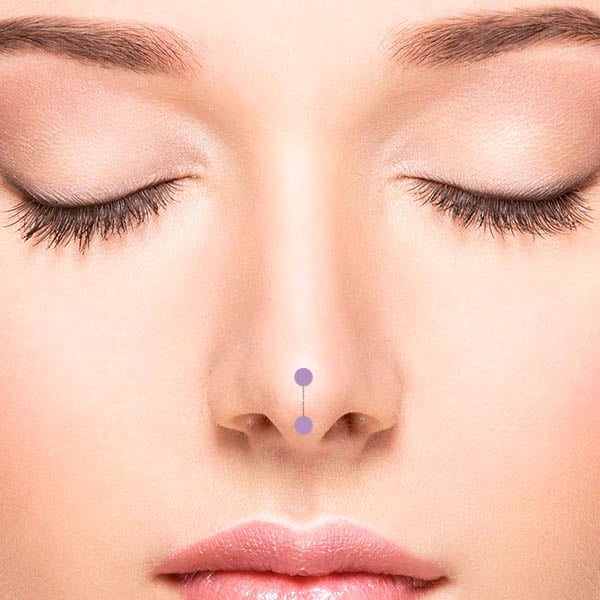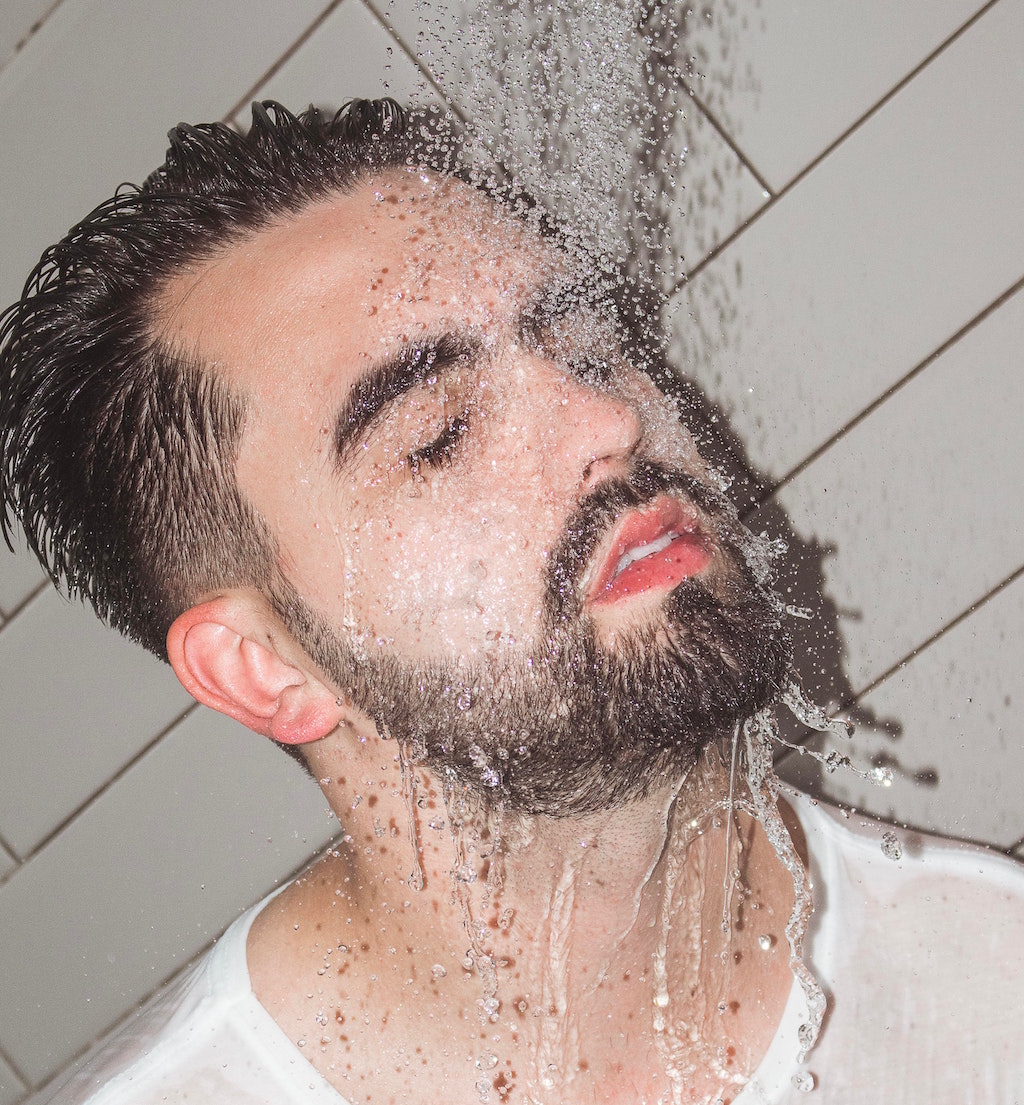
Even if you’re an avid member of the piercing world, you might find that there are plenty of piercings out there so uncommon that you haven’t seen one before.
The rhino piercing is such a thing.
Although the rhino piercing (also known as the vertical nose tip piercing) has been part of the Western piercing scene since the early 2000s, it’s remained below the radar for most people. This makes it the perfect piercing for those of you who are searching for a new look that almost no one has.

However, the rhino piercing is a bit tricky. Since it appears in the tip of the nose where there’s some complicated cartilage, it needs to be precisely placed in order to avoid damage. It’s not a piercing that you want to pursue on a whim.
Here’s what you need to know and how you should prepare before getting a rhino piercing.
First, we should discuss exactly what this piercing entails.
The rhino piercing is so-named because it appears at the tip of the nose. (Its other name, the vertical nose tip piercing, also does a good job of describing how this piercing looks.) It consists of an entry hole at the top of the tip of your nose and an exit hole in the area between your nostrils. Due to this placement, it can only accept curved barbells.
It might seem complicated to get a rhino piercing, but it’s not much different than getting any other piercing. Your piercer will mark the entry and exit points with a marker, you’ll approve, then they’ll take a hollow needle and push it through the tissue from the bottom to the top.
While the shape of your nose and your nose anatomy will largely dictate how your rhino piercing is placed, there is one variation of the rhino piercing: the deep rhino piercing. This style simply places the top part of the piercing higher up in the nose. The deep rhino piercing offers an interesting aesthetic, but you need to be careful. The cartilage that makes up your septum appears in the center of your nose, and you need to make sure that the piercing avoids this. Therefore, deep rhino piercings are often slightly crooked to make room for this cartilage.
They’re also even less common than standard rhino piercings, so you might struggle to find a piercer who is experienced in this specific piercing (and since it’s so technical, finding an expert is a must). If you choose to go with the deep rhino piercing, do so with caution, and make sure that you have fully researched both your piercer and the piercing before you make an appointment.
When you look at a rhino piercing, the first thing you might think is, “That has to be painful.” (This author certainly did.) You might be surprised to learn that, while it is one of the more painful piercings, you’ll feel more discomfort than pain.

Cartilage tends to hurt more than piercings in fleshier areas, so if you’ve gotten your ears or nostrils pierced, you already know what to expect in terms of pain. The discomfort of the piercing comes from the fact that there’s a significant amount of tissue that the needle must go through, and you’ll feel that. If you get a piercer who has experience with rhino piercings (which you should), then the process should still be fairly quick and smooth. It’ll take slightly longer than a helix piercing, for example.
Of course, the pain you feel depends upon your personal pain tolerance. But, you might be happy to know that most people who have gotten the rhino piercing have stated that it hurt less than they were expecting.
As with all piercings, you should take the time to really picture the rhino piercing on your nose to determine if it’s the aesthetic for you. This piercing, in particular, will stand out, so we recommend that you take some real time to consider the style and get some opinions from trusted friends.
Once you’ve decided that this is the piercing for you, it’s time to find a piercer. As mentioned previously, the rhino piercing is more technical than other piercing types, and you want to find a piercer who has experience with the rhino piercing as well as a sound understanding of nose cartilage. The rhino piercing—and especially the deep rhino piercing—needs to be precisely placed to avoid complication.
If you live in a more rural area, it might be difficult to find someone with this particular expertise. If that’s the case, you should make a trip to find someone who knows how to do this piercing. While other piercing types are more forgiving, this is one that should be done by someone who has completed this piercing many times before or who is being supervised by someone who has.
Healing a rhino piercing takes some time, but the aftercare process isn’t any different than other piercings.
Following the instructions that your piercer provides after the piercing is completed, you should soak your piercing in a saline aftercare solution or homemade sea salt soak for around five minutes 2 – 3 times daily. To do this, you can fill a dixie cup with the solution and dip your nose in.

Try not to move your jewelry too much. You’ll be fitted with a larger piece in the beginning to accommodate swelling. Once swelling has gone down, you can visit your piercer to get fitted with a smaller piece.
You can expect to spend a minimum of 6 – 9 months on healing, but many people spend up to 12 months or more. Before you stop aftercare practices, have your piercer take a look to confirm that your piercing has fully healed. The piercing might appear healed on the outside before it’s healed on the inside, and since the rhino piercing has such a long fistula, it takes an expert eye to determine that healing is complete.
Once your piercer has confirmed that the piercing is healed, you can change out your jewelry. The standard rhino piercing takes a curved barbell while the deep rhino piercing will wear a straight barbell. Be sure to ask your piercer what the proper size is. Jewelry that’s too big might snag, and jewelry that’s too small could press against your piercing which could cause complications like jewelry rejection.
While standard ball ends are always classic, gemstones offer a gorgeous look in this already alluring piercing. You can also choose barbells with mismatched ball ends, charms, opals, or pearls.
Looking to get inspired? Here are some of our favorite curved barbell options for your rhino piercing.
Leave A Comment